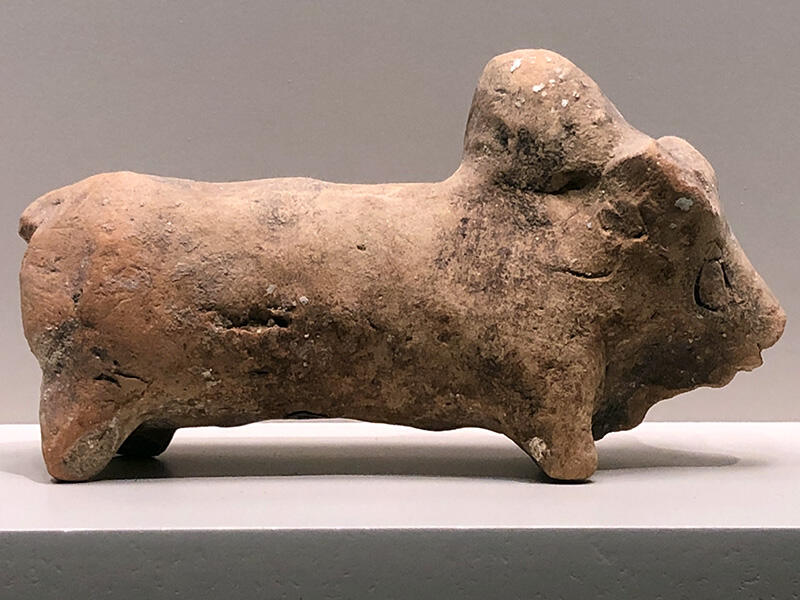A humped bull figurine, similar to ones also found in Sohr Damb/Nal in Balochistan, with which Mundigak also shared burial customs in Period III [3400-2900 BCE].
Casal writes, after discussing the caprid [goat] types found on tasting glasses "Among the Iranian sites, those in the northeast are not the only ones with which Mundigak is in contact. . It is in the Susa region [western Iran] that we must look for inspiration, where the style of Susa II [c. 3900-3100 BCE] offered the same treatment of the body of animals to the period of the Archaic Dynastic II. If the style of Quetta [Balochistan], characteristic in Mundigak of the previous period and inspired by the style of Susa I [c. 4200–3900 BCE] is still maintained in the decoration of certain vessels, it is therefore new currents from the same region which now predominate, proof that the contacts with the Susa were a constant in Mundigak's commercial life. The influence of Susa is not limited to Afghanistan. It extends to the north of Pakistan where American excavations have found, in the very region of Quetta, the same process of replacing the geometric style with a decoration in which animals with elongated bodies appear. But here the decor becomes Indian; it is no longer the caprids dear to Iranian art, but above all bovids which are represented and more specifically the humped bull." (La Civilisation d l'Indus et ses enigmes [The Indus Civilization and its Puzzles], 1969, p. 68)

